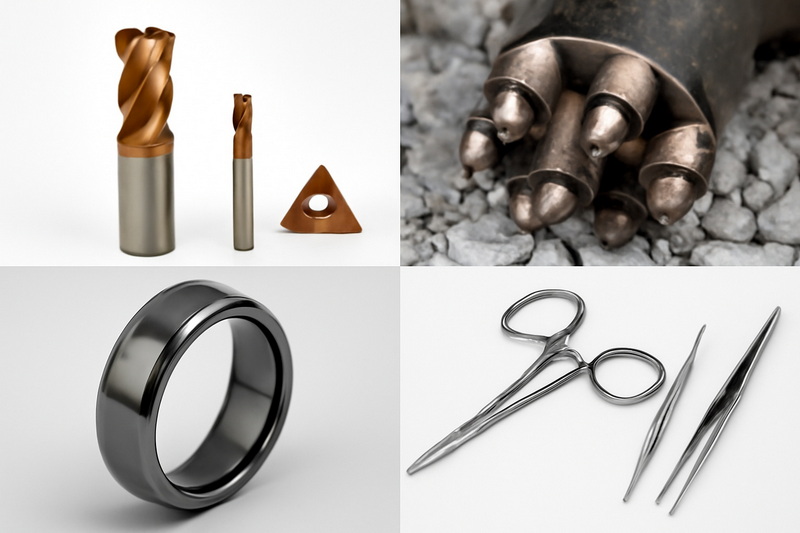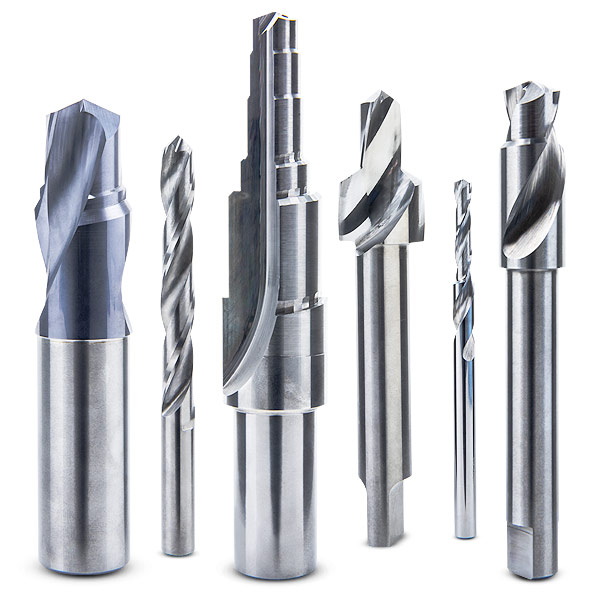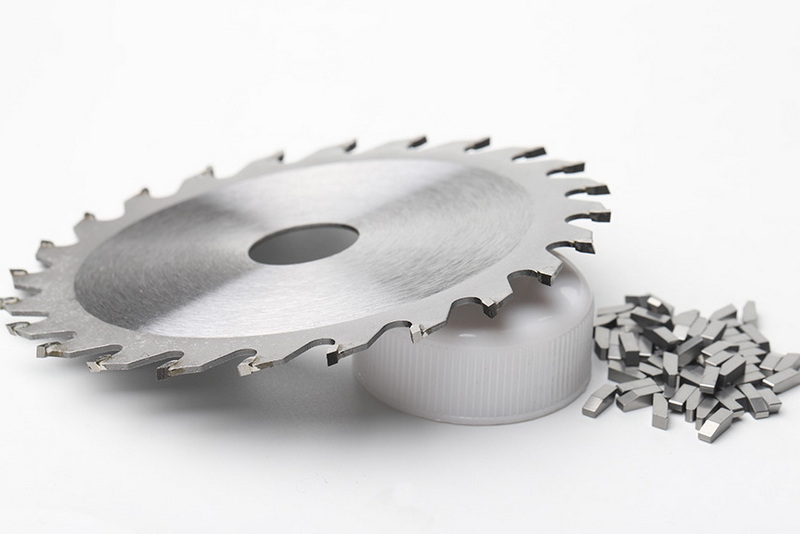Content Menu
● Understanding Tungsten Carbide
● Raw Materials Used in Tungsten Carbide
>> Tungsten
>> Carbon
>> Binders (Cobalt, Nickel, Iron)
>> Other Additives
● Manufacturing Process of Tungsten Carbide
>> 1. Extraction and Refinement
>> 2. Carbide Formation
>> 3. Powder Processing
>> 4. Shaping and Sintering
>> 5. Finishing
● Microstructure and Composition
● Physical and Chemical Properties
● Additional Insights into Tungsten Carbide's Mechanical Properties
● Industrial and Everyday Applications
● Environmental and Economic Impact
● Innovations and Future Trends
● Advantages and Limitations
>> Advantages
>> Limitations
● Summary of Key Points
● Conclusion
● FAQ: Tungsten Carbide
>> 1. What is the main material in tungsten carbide?
>> 2. How is tungsten carbide different from steel?
>> 3. Why is cobalt used as a binder in tungsten carbide?
>> 4. Can tungsten carbide be recycled?
>> 5. What are the main industrial uses of tungsten carbide?
Tungsten carbide is a remarkable engineering material renowned for its extreme hardness, durability, and versatility. Its unique composition and structure make it indispensable across a wide spectrum of industries, from manufacturing and mining to jewelry and aerospace. This article delves deeply into the materials, manufacturing processes, properties, and applications of tungsten carbide, providing an in-depth understanding for professionals, enthusiasts, and anyone interested in advanced materials science.

Understanding Tungsten Carbide
Tungsten carbide is a compound formed by the chemical combination of tungsten and carbon. In its purest form, it is represented by the chemical formula WC, indicating a 1:1 atomic ratio of tungsten (W) to carbon (C). However, most industrial applications use a composite material known as "cemented carbide," where tungsten carbide grains are bonded together by a metallic binder, typically cobalt or nickel.
Tungsten carbide is often mistaken for a metal due to its metallic luster and high density, but it is technically a ceramic-metal composite, or cermet, combining the best attributes of both ceramics (hardness, wear resistance) and metals (toughness, ductility).
Raw Materials Used in Tungsten Carbide
Tungsten
Tungsten is a rare, heavy metal with exceptional melting point and density. It is sourced primarily from minerals such as scheelite (CaWO₄) and wolframite ((Fe,Mn)WO₄). The extraction process involves mining, refining, and chemical conversion to obtain high-purity tungsten compounds suitable for carbide production.
Carbon
Carbon, typically in the form of graphite or soot, is the second essential element. It reacts with tungsten to form the hard, crystalline structure of tungsten carbide. The purity and particle size of carbon play a crucial role in determining the final properties of the carbide.
Binders (Cobalt, Nickel, Iron)
In cemented carbide, a metallic binder is added to enhance toughness and facilitate the sintering process. Cobalt is the most common binder, but nickel or iron may also be used for specific applications, such as improved corrosion resistance or magnetic properties.
Other Additives
Depending on the desired application, small amounts of elements such as titanium, tantalum, or vanadium may be introduced to modify properties like grain growth, corrosion resistance, or toughness.
Manufacturing Process of Tungsten Carbide
The production of tungsten carbide is a sophisticated, multi-stage process that combines advanced chemistry with precision engineering. The typical steps are as follows:
1. Extraction and Refinement
- Tungsten Ore Processing: Tungsten ores are mined, crushed, and chemically treated to produce ammonium paratungstate (APT), a purified intermediate.
- Tungsten Oxide Production: APT is calcined at high temperatures to yield tungsten oxide (WO₃).
- Tungsten Metal Powder: Tungsten oxide is reduced in a hydrogen atmosphere to produce pure tungsten powder.
2. Carbide Formation
- Mixing with Carbon: The tungsten powder is intimately mixed with a precise amount of carbon source.
- High-Temperature Reaction: The mixture is heated in a furnace at 1,400–2,000°C, causing tungsten and carbon to react and form tungsten carbide (WC) powder.
3. Powder Processing
- Milling: The WC powder is milled to achieve the desired particle size and uniformity, typically in the sub-micron to a few microns range.
- Blending with Binder: The milled powder is blended with a metallic binder (usually cobalt) and sometimes with lubricants or pressing aids.
4. Shaping and Sintering
- Pressing: The blended powder is pressed into desired shapes using hydraulic or mechanical molds.
- Sintering: The pressed shapes are sintered at 1,400–1,600°C in a controlled atmosphere. The binder melts, wets, and cements the tungsten carbide grains into a dense, solid mass.
5. Finishing
- Machining and Grinding: The sintered parts are machined and ground to precise dimensions, often using diamond tools due to the extreme hardness of tungsten carbide.
- Optional Coatings: Some components receive additional coatings (e.g., titanium nitride) for enhanced performance.
Microstructure and Composition
Tungsten carbide exists in two primary crystalline forms:
- Hexagonal (α-WC): The most common and stable at room temperature, featuring layers of tungsten atoms with carbon atoms occupying interstitial sites.
- Cubic (β-WC): A high-temperature phase with a rock-salt structure, less commonly encountered in practice.
Cemented carbide is a composite material where hard WC grains are embedded in a softer, ductile metal binder. The typical composition ranges are:
| Component | Percentage by Weight |
| Tungsten Carbide | 80–97% |
| Cobalt (Binder) | 3–20% |
| Nickel/Iron | Trace (optional) |
The grain size of tungsten carbide and the proportion of binder metal are critical in determining the final properties of the material. Finer grains generally result in higher hardness, while increased binder content enhances toughness.
Physical and Chemical Properties
Tungsten carbide's properties are a direct result of its composition and microstructure:
- Hardness: 9–9.5 on the Mohs scale, second only to diamond.
- Density: Approximately 15.6 g/cm³, about twice that of steel.
- Melting Point: Around 2,870°C, allowing use in extreme heat.
- Young's Modulus: 530–700 GPa, indicating exceptional stiffness.
- Wear Resistance: Outstanding resistance to abrasion and deformation.
- Corrosion Resistance: Stable in most environments, though susceptible to strong acids.
- Thermal Conductivity: Efficient at dissipating heat (110 W/m·K).
- Thermal Expansion: Low coefficient, reducing deformation under heat.
These properties make tungsten carbide ideal for demanding applications where conventional metals would fail.
Additional Insights into Tungsten Carbide's Mechanical Properties
Tungsten carbide's exceptional hardness is complemented by its impressive compressive strength, which allows it to withstand significant mechanical stress without deformation. This makes it particularly valuable in applications where materials are subjected to high impact or pressure. Moreover, its fracture toughness, while lower than metals, can be optimized by adjusting the binder content and grain size, allowing engineers to tailor the material for specific uses.
The ability to fine-tune these mechanical properties means tungsten carbide can be engineered for a wide range of specialized applications. For instance, increasing the binder content improves toughness and impact resistance, making the material suitable for mining tools and heavy-duty machinery. Conversely, reducing the binder and refining the grain size enhances hardness, which is ideal for precision cutting tools and wear-resistant parts.
Industrial and Everyday Applications
Tungsten carbide's unique combination of hardness, toughness, and resistance to wear and heat has led to its widespread adoption in numerous fields:
- Cutting Tools: Drill bits, milling cutters, lathe tools, saw blades for machining metals, wood, composites, and stone.
- Mining and Drilling: Rock drilling bits, auger teeth, wear-resistant liners.
- Oil and Gas: Valve seats, pump impellers, flow restrictors.
- Aerospace: High-performance components requiring precision and durability.
- Jewelry: Rings, bracelets, and watch bezels prized for their scratch resistance and luster.
- Sports Equipment: Spikes for track shoes, tire studs for winter driving.
- Medical Devices: Surgical instruments, dental burrs.
- Other Uses: Ballpoint pen tips, dies for wire drawing, and armor-piercing projectiles.
The adaptability of tungsten carbide ensures its relevance in both high-tech industrial sectors and everyday consumer products.

Environmental and Economic Impact
The recycling of tungsten carbide not only conserves natural resources but also reduces the environmental footprint associated with mining and refining tungsten ores. The recycling process involves collecting scrap carbide, crushing it, and separating the binder metals from the carbide grains. This reclaimed material can then be reprocessed into new carbide products, making tungsten carbide a sustainable choice in modern manufacturing.
Economically, recycling tungsten carbide helps stabilize the supply chain and reduce costs, as tungsten is a strategic and relatively scarce resource. Manufacturers are increasingly turning to recycled carbide to ensure a reliable and environmentally responsible source of raw materials.
Innovations and Future Trends
Research continues to explore new binder materials and composite structures to enhance the performance of tungsten carbide. For example, the development of nano-grained tungsten carbide composites promises even greater hardness and toughness. Additionally, coatings such as diamond-like carbon (DLC) are being investigated to further improve wear resistance and reduce friction in cutting tools.
Other innovations include the use of alternative binders, such as iron-based alloys, to reduce reliance on cobalt, which is expensive and subject to supply chain volatility. Advances in additive manufacturing are also enabling the production of complex tungsten carbide components with minimal material waste.
Advantages and Limitations
Advantages
- Extreme hardness and wear resistance
- High thermal and chemical stability
- Excellent dimensional stability under load
- Long service life, reducing downtime and maintenance
Limitations
- Brittleness compared to metals (can fracture under impact)
- Difficult and costly to machine (requires diamond tools)
- Heavier than many alternative materials
- Susceptible to corrosion by strong acids
Summary of Key Points
- Tungsten carbide combines extreme hardness with good toughness through its composite structure.
- Its production involves complex chemical and mechanical processes to achieve desired properties.
- Recycling plays a crucial role in sustainability and cost-effectiveness.
- Ongoing research aims to push the boundaries of performance for future applications.
Conclusion
Tungsten carbide is a material engineered from the fusion of tungsten and carbon, often enhanced with a metallic binder such as cobalt or nickel. Its unique combination of properties—exceptional hardness, high density, wear resistance, and thermal stability—make it a cornerstone of modern industry. From high-precision cutting tools to jewelry and aerospace components, tungsten carbide's versatility and performance are unmatched. Understanding its composition and manufacturing process allows for better selection and application in various demanding environments.

FAQ: Tungsten Carbide
1. What is the main material in tungsten carbide?
Tungsten carbide is primarily composed of tungsten and carbon, typically combined in a 1:1 atomic ratio to form the compound WC. In most practical applications, tungsten carbide grains are cemented together with a metallic binder such as cobalt or nickel to enhance toughness.
2. How is tungsten carbide different from steel?
Tungsten carbide is significantly harder and more wear-resistant than steel. While steel is tough and flexible, tungsten carbide maintains sharpness longer, withstands higher temperatures, and resists abrasion and deformation, making it ideal for cutting and drilling tools.
3. Why is cobalt used as a binder in tungsten carbide?
Cobalt acts as a ductile binder that holds the hard tungsten carbide grains together, providing toughness and reducing brittleness. The amount of cobalt can be adjusted to balance hardness and toughness according to the application requirements.
4. Can tungsten carbide be recycled?
Yes, tungsten carbide is highly recyclable. Scrap tools and worn-out parts can be processed to reclaim both tungsten and the binder metals, making it an environmentally and economically sustainable material.
5. What are the main industrial uses of tungsten carbide?
Tungsten carbide is widely used in cutting tools, mining and drilling equipment, wear-resistant components, jewelry, aerospace parts, and medical devices due to its unmatched hardness, durability, and resistance to extreme conditions.
















